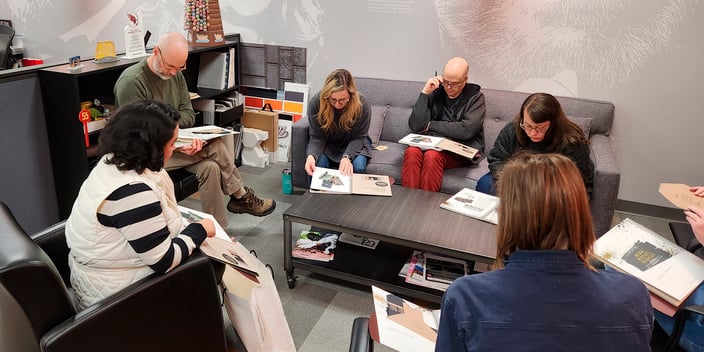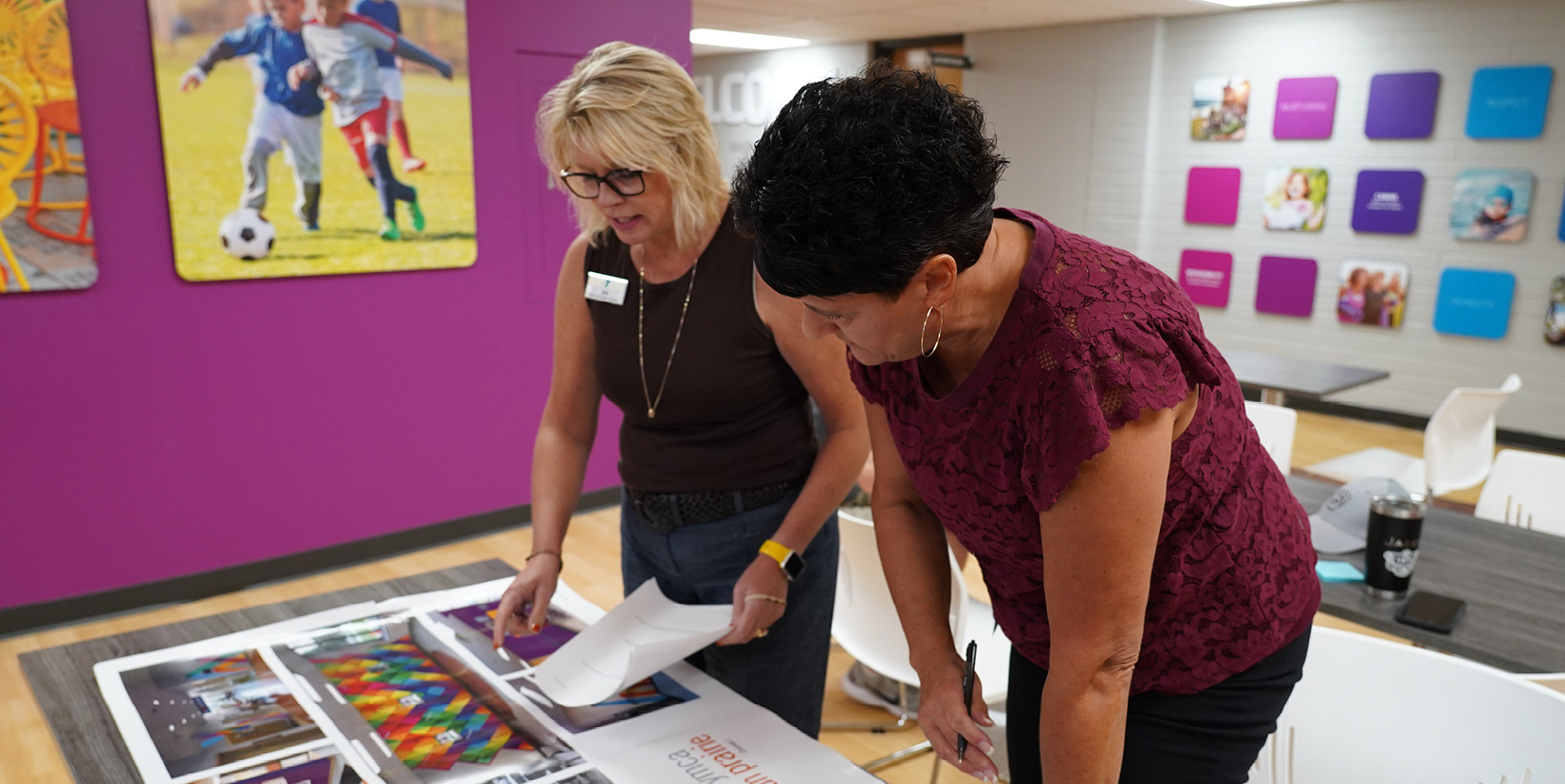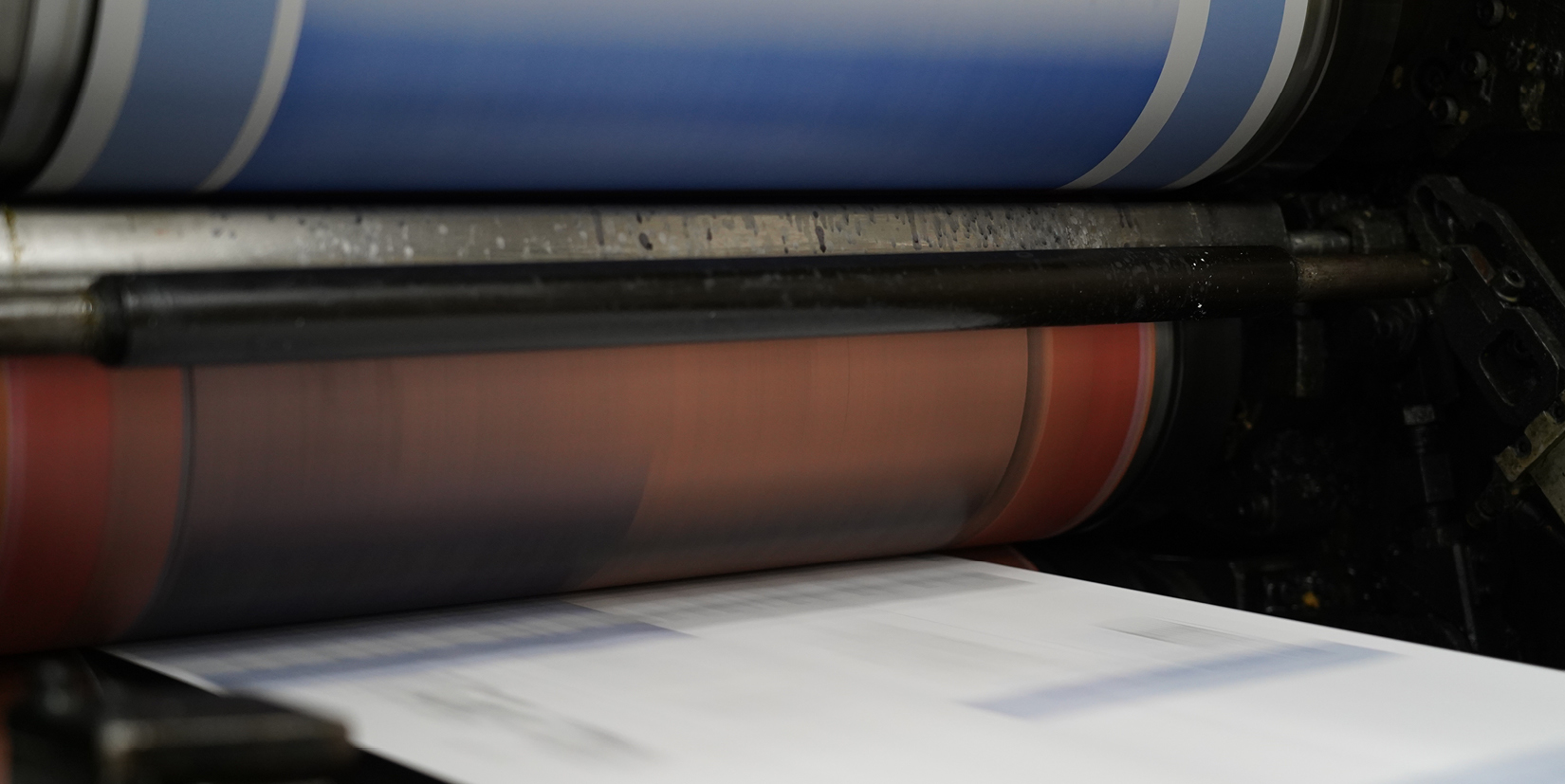
You're a new designer, fresh out of school, and you've just been assigned your first print job. Congrats! Now what? Before you rolodex your print production knowledge and excitedly overwhelm yourself with the thought of grommet binding or special UV coatings, revisit some basic considerations for a successful first go.
While this could be as simple as knowing who to contact, to something more specific like proper file setup for print-ready pieces, no detail is too small to overlook. Ease into the process with this broad overview and dig deeper with the resources linked here.
Know who you are talking to:
Once you get in touch with a printer it's common for you to start communications with a sales representative. This person will provide support throughout the entire process. The salesperson is invested in the content and context of the print project, so they can guide you through critical points of decision-making and offer recommendations when opportunities arise to push the design. That might mean suggesting a text weight they carry in-house or a spot gloss to create emphasis. Lean on them to achieve your desired look and develop your print solution.

Once your project is defined, your salesperson will pass you off to a customer experience advisor, who will serve as the liaison between other departments, such as pre-media and pre-press teams, to streamline proofing and production.
Things to consider before you start designing:
Thoroughly understanding the cost, time, and quantity of your print job will protect you from any disheartening news. As an ambitious new designer, outside the walls of classroom hypotheticals, it is important to remember that your client is often held to these constraints. All of which will likely determine the method of printing.
Two common printing methods you will likely choose between are offset and digital printing. If you need to print many pieces, offset printing is a cost-effective option as the larger the quantity, the lower the cost per piece. If you have a tight deadline, you may need to consider digital printing. It is often a quicker process, as offset printing requires make-ready time and metal plate production. The machine doesn't need this warmup when printing digitally. For more distinctions read Digital Printing or Offset Printing: Which Should You Choose?

What your printer needs from you:
Any necessary specifications that contribute to the accuracy of your print job should be communicated to your printer. This will include the paper weight, coating, brightness, and color. All of which contribute to the design's overall look and feel you determine with your client. Before contacting your printer, familiarize yourself with paper specs here: A Novice's Guide to Picking Paper for Print.
Similar to submitting assignments to your design instructor, there are steps you can take to ensure a smooth transfer of your project to your printer. Some of these preparations are likely already in your routine. Running spell check and exporting a print-ready PDF are common. Both help to minimize rounds of revisions, saving time and money.
As a diligent designer, trim marks and bleeds are always in place. But a refresher on why bleeds need to be in your design file and how to add them is good for even a seasoned designer.
Final insights:
The good news is you don't have to know it all right out of the gate. Your printer is incredibly knowledgeable and is there to support you. Use them as a resource to learn about the production process. Taking the initiative to ask questions and get clarification will only enrich the experience for you and result in a more successful product!

